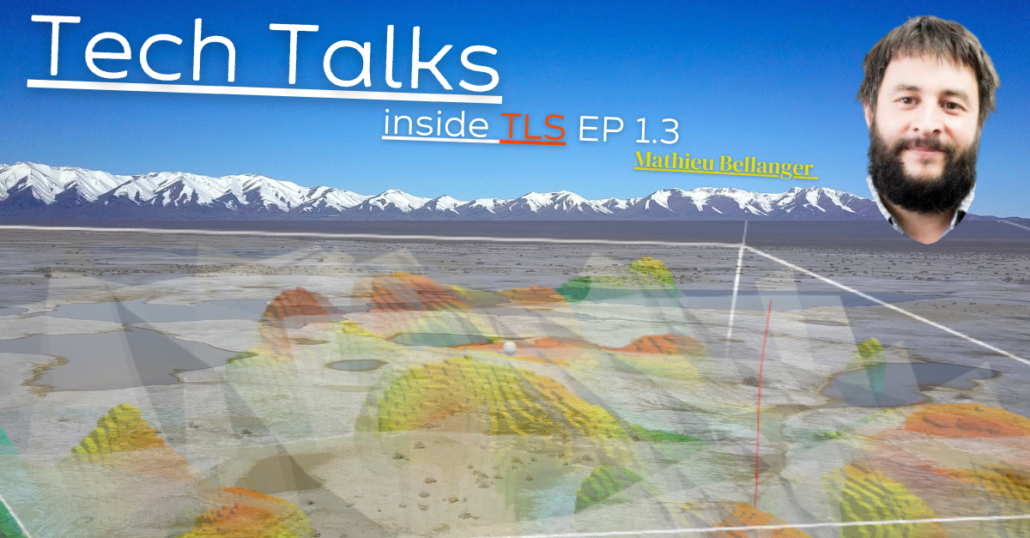TLS Tech Talks Podcast Ep. 1.3
Secrets of a Next-Gen Geothermal Company

“When drilling, we’re essentially asking detailed questions of the Earth”.
“While it’s possible we might encounter unexpected findings, our extensive preparatory work means that surprises are unlikely. If they occur, they would be outside the broad range of possibilities we’ve already considered.”
You are tuned in to “TLS Tech Talks,” behind-the-scenes access to our AI-enhanced exploration tool development.
Thank you for being with us as we explore tales of perseverance, innovation, and the pursuit of truly sustainable energy solutions.
Subscribe & stay tuned as we go deeper into the development of exploration, development, and production of geothermal energy.
Below you will find the abbreviated transcript from Episode 1.3:
Rusty: Hey, welcome back to TLS Tech Talks with Mathieu Bellanger. This is the continuation of Episode 1, finishing our chat with Mathieu Bellanger.
Mathieu: Our exploration strategy is all about probabilities and considering multiple models and scenarios. We gather extensive data across various scales, from lithospheric to fault interaction levels. When drilling, we’re essentially asking detailed questions of the Earth. While it’s possible we might encounter unexpected findings, our extensive preparatory work means that surprises are unlikely. If they occur, they would be outside the broad range of possibilities we’ve already considered.
Rusty: That’s a very methodical approach. Can you explain the role of algorithms in creating these geological models?
Mathieu: Our models are based on a combination of various factors like salinity, permeability, and thermal properties. These aren’t just single predictions but a range of possible scenarios that our data supports. The algorithms help us synthesize this information into coherent models that guide our exploration and drilling plans.
Rusty: Looking forward, once you’ve established a geothermal site, what’s the long-term impact on the target location?
Mathieu: Our simulations suggest that a geothermal site, especially in deep zones like those we target, can be exploited for over 30 years. We’re not just extracting heat; we’re engaging in a sustainable exchange with the Earth’s natural thermal systems. The size of these systems is incredibly vast, making long-term exploitation feasible.
Rusty: How do you quantify the energy potential of these geothermal systems?
Mathieu: We use a combination of mathematical and physical models to predict the energy potential. For example, in Buffalo Valley, we estimate a potential of around 50 MW of electrical power. This reflects the immense thermal energy present in the crust. However, it’s more meaningful to discuss how this energy translates into power plant capacity and what it means for human and societal needs.
Rusty: So, regarding the power capacity of the geothermal energy, you mentioned 50 MW. Could you elaborate on how this is calculated?
Mathieu: Certainly. When we talk about 50 MW, we refer to the installed capacity of a geothermal power plant, capable of operating at 70 to 90% efficiency. This means that if you install a 50 MW plant, it effectively produces 35-45 MW of power hour by hour, akin to a constant flow of energy.
Rusty: That’s quite efficient. How does this compare to other energy sources like solar?
Mathieu: Geothermal energy has a high availability factor. For instance, a 1-megawatt geothermal plant operates almost like a 0.9-megawatt plant continuously, unlike solar, where the actual energy yield might be lower due to various operational factors.
Rusty: Interesting. So, as TLS continues to evolve, do you see geothermal energy being used more in urban settings?
Mathieu: The potential for geothermal energy is vast, but its deployment depends on the geological properties of each location. It’s not always possible to find geothermal resources near cities. That’s why electricity, which can be easily transported, plays a crucial role in harnessing geothermal energy. For residential heating, for instance, the consistent temperature of the underground can be harnessed almost everywhere, but it still requires electricity to operate the systems.
Rusty: Does this mean geothermal energy is more suited to isolated locations rather than urban centers?
Mathieu: Geothermal resources are abundant, but they are not always situated near populated areas. We need to connect these resource-rich sites to consumers via power grids. California, for example, has great geothermal potential, but we must also consider seismic risks and ensure public safety.
Rusty: It seems like a balance between harnessing natural resources and ensuring community safety.
Mathieu: Absolutely. Our primary focus at TLS is to contribute positively to society. We aim to progress and improve life conditions, not regress. This commitment shapes our approach to every project we undertake.
Rusty: Perfect close. This talk has been very meaningful for me, and hopefully for our listeners. It gives us all an opportunity to share our voice and excitement about the projects
End Transcript – Please subscribe to TLS Tech Talks for Ep. 2 – Exploration Geology with Bastien Hermant


